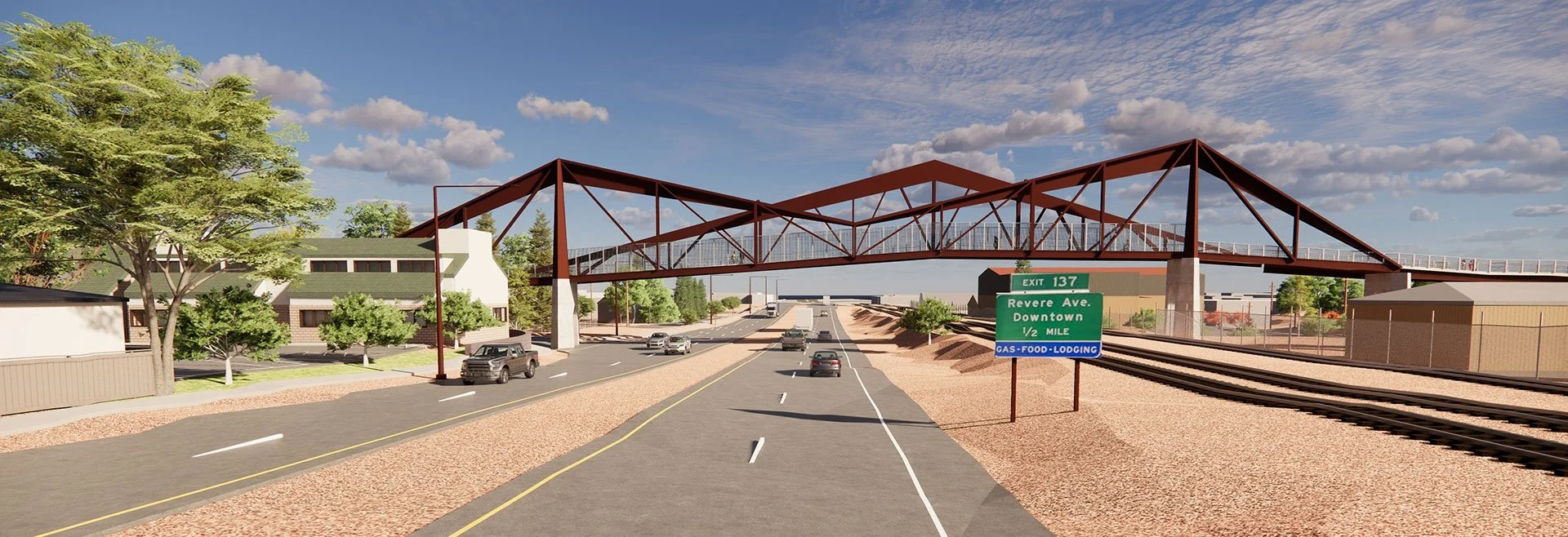
Climate Friendly & Equitable Communities
We can tackle climate change now
Thanks for signing on!
Earlier this year, 1,200 of you signed on to a letter of support for Oregon’s Climate-Friendly and Equitable Communities rulemaking process. We’ll keep you up to date on what happens next.
Mixed-use buildings, when paired with pedestrian-friendly transportation networks, can dramatically reduce carbon emissions: Rendering from Ten Over Studio.
A vision for a sustainable future
Today’s biggest contributors to climate change are tied to our built environment. Where we live and work and how we travel determine our impact on this planet. Greenhouse gas emissions from transportation are the biggest contributor to climate change nationally. In Oregon, transportation accounts for 40% of statewide emissions.
Knowing what we know about where the bulk of carbon emissions means we can tackle climate change head-on, and soon.
If we build up before we build-out, we’ll see a positive transformation for a more climate-friendly future.
Compact growth protects surrounding open space and leaves more natural areas intact. These provide important “carbon sinks” that convert CO2 to oxygen.
By building in and up first, housing remains close to the community centers people rely on. Rather than building new roads or needing to travel further distances in a car to reach work, school, and services, compact growth makes efficient and convenient use of space, all while lowering greenhouse gas emissions from vehicle miles traveled.
A huge contributor to greenhouse gas emissions is our energy use, primarily for heating and cooling buildings and homes. This adds up in costs of utility bills and in cost to the planet. By promoting sustainable, compact growth in the heart of cities and towns, we can decrease energy consumption.
In 1973, the people of Oregon approved a visionary land use system to protect our natural resources and encourage well-planned cities and towns. By thoughtfully guiding growth, Oregon has been able to develop more compact neighborhoods that reduce major carbon emitters, like vehicle miles traveled.
But climate change is at our doorstep and we are already feeling its impacts. Central Oregon is ready for climate-friendly and equitable communities. We don’t have another decade to wait.
A Climate-Friendly and Equitable Future for all
Right now, we can create a brighter future for all by taking actions that help transform how we live, travel, work, and play.
Oregon’s Land Conservation and Development Commission (LCDC) is in the midst of a Climate-Friendly and Equitable Communities rulemaking process. Their goal is “to transform Oregon’s communities to be safe, equitable, sociable, and pleasant places where driving is not required, and the amount of driving is reduced.”
How will these rules do that?
These rules would designate climate-friendly areas in our cities across Oregon. Then, these rules would direct growth to the areas and provide abundant, high-quality infrastructure for biking, walking, and transit.
“This could be a seismic shift from business-as-usual by placing climate change, affordable housing, and equitable transportation choices at the center of how our cities are planned, built, and funded. For instance, these rules would designate Climate-Friendly Areas in our cities and direct a portion of new housing development to those areas - and these rules would also direct cities to prioritize abundant, high-quality infrastructure projects for biking, walking, and public transit in those areas.”








